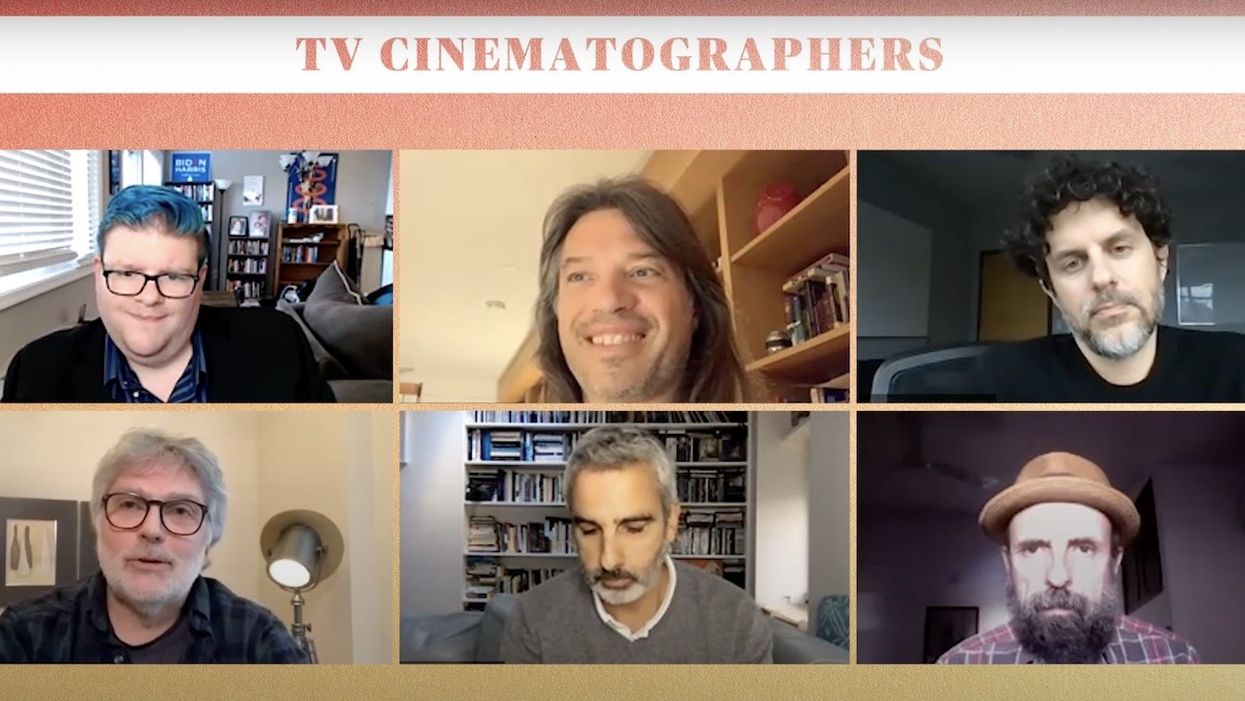Scenes That Made These Five TV Cinematographers
We all have moments that define us. For DPs, it could be one simple scene or one visually pleasing film.

What is the first movie that made your eyes open to the fact that lighting could influence a story? For me, it was watching the Pale Man scene in Pan’s Labyrinth. The warm light of the fire contrasts the threat in the room, while an overhead light illuminates the tempting food. That is when I realized that lighting could act as an extension of visual storytelling.
In a special “Meet the Experts” Q&A event with the 2022 Emmy and Guild contenders, Gold Derby sat down to talk about what scenes made these TV cinematographers interested in the world of cinematic photography. Included on this panel are Michael Femignair from Midnight Mass, David Moxness from The Wheel of Time, Boris Mojsovski from Titans, Antonio Calvache from Queen Sugar, and Andrij Parekh from Scenes from a Marriage.
Check out the panel discussion below.
Midnight Mass’ DP found a love for cinematography after watching John Bailey’s work in The Accidental Tourist. Fimognari noticed how the light came through laced curtains on a window and how it fell onto the bed. The space and lighting told him everything he needed to know about those characters before they even said a word to each other.
Both Mojsovski and Calvache felt that same way but with Joseph Ruttenberg’s work in The Last Time I Saw Paris. It was one of the opening scenes where the curtains are opened, and the entire atmosphere of the room changes.

The power of lighting to change the story through its absence or direction is like changing where you are sitting in a room and watching a conversation between two strangers unfold. You notice little details that would have been absent if you eat somewhere else. The lighting would hit them in the same way, making their features softer or harsher. Slowly, you are learning how blocking and the position of lighting can alter the story.
Moxness believes that the cinematography of Kubrick’s 2001: Space Odysseyis what made him want to become a cinematographer. The lighting in space was unlike anything he had seen before and found his interest piqued at how the visuals had a deep impact on his viewing experience. There wasn’t a single scene he could pinpoint from the movie that deeply affected him because the entire experience was unearthly.
Just as Moxness couldn’t pinpoint an exact scene that changed him, Scenes from a Marriage’s Parekh found beauty in the sensitive light in Francis Ford Coppola's TheBlack Stallion. The light worked to accentuate the beauty of the stallion, the characters, and the performance of the actors.

Parekh noted that he found joy in the entire process from talking about color pallets in museums to watching the sunrise each morning before work to seeing the pieces of the project fall into place.
No matter how you find joy in the process of cinematography, it is important to celebrate those moments that define us as creatives. Those moments inspire our future work, teaching us different ways to tell stories without making the world excessively beautiful and distracting from the story being told. The simplicity of lighting is something that we should never stop celebrating or experimenting with, so go out there and tell a story through cinematography.
What scene in cinema made you appreciate cinematography or made you want to become a cinematographer? Let us know in the comments below!
Source: Gold Derby












